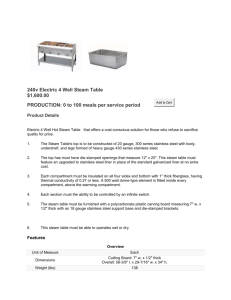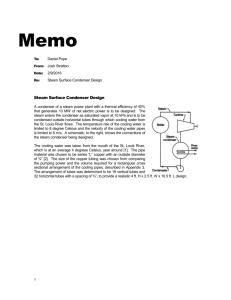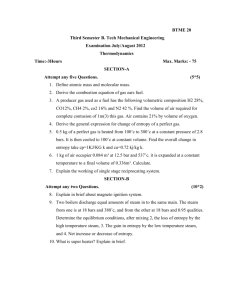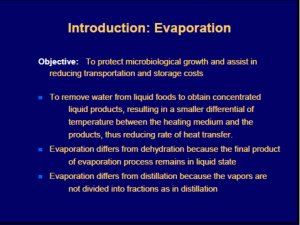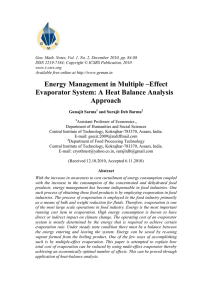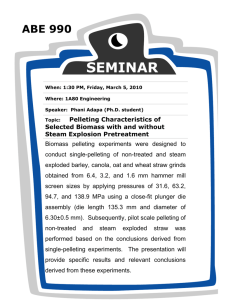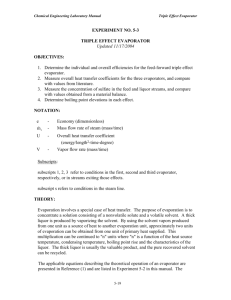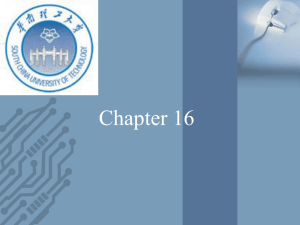Single Effect Experiment 2
advertisement
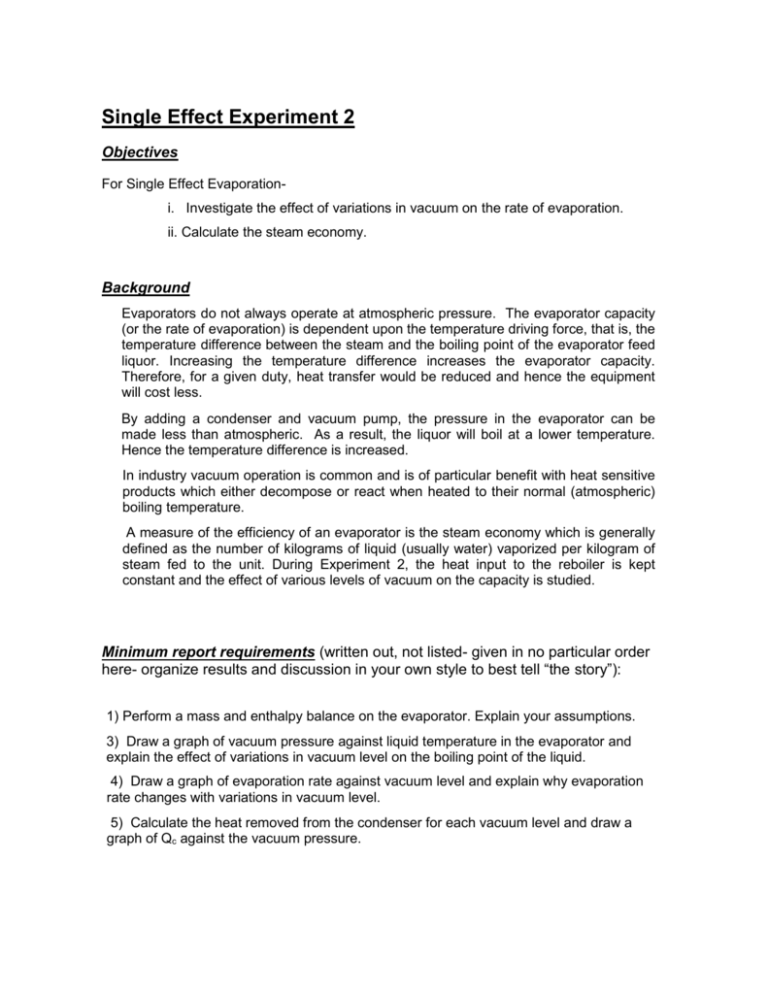
Single Effect Experiment 2 Objectives For Single Effect Evaporationi. Investigate the effect of variations in vacuum on the rate of evaporation. ii. Calculate the steam economy. Background Evaporators do not always operate at atmospheric pressure. The evaporator capacity (or the rate of evaporation) is dependent upon the temperature driving force, that is, the temperature difference between the steam and the boiling point of the evaporator feed liquor. Increasing the temperature difference increases the evaporator capacity. Therefore, for a given duty, heat transfer would be reduced and hence the equipment will cost less. By adding a condenser and vacuum pump, the pressure in the evaporator can be made less than atmospheric. As a result, the liquor will boil at a lower temperature. Hence the temperature difference is increased. In industry vacuum operation is common and is of particular benefit with heat sensitive products which either decompose or react when heated to their normal (atmospheric) boiling temperature. A measure of the efficiency of an evaporator is the steam economy which is generally defined as the number of kilograms of liquid (usually water) vaporized per kilogram of steam fed to the unit. During Experiment 2, the heat input to the reboiler is kept constant and the effect of various levels of vacuum on the capacity is studied. Minimum report requirements (written out, not listed- given in no particular order here- organize results and discussion in your own style to best tell “the story”): 1) Perform a mass and enthalpy balance on the evaporator. Explain your assumptions. 3) Draw a graph of vacuum pressure against liquid temperature in the evaporator and explain the effect of variations in vacuum level on the boiling point of the liquid. 4) Draw a graph of evaporation rate against vacuum level and explain why evaporation rate changes with variations in vacuum level. 5) Calculate the heat removed from the condenser for each vacuum level and draw a graph of Qc against the vacuum pressure. 6) Discuss the variation of the following parameters under conditions of constant steam pressure and varying vacuum level. i. Capacity ii. Economy iii. Concentrate production rate iv. Distillate production rate v. The total heat supplied to the evaporator Refer to graphs drawn previously and give reasons for your answers. 7) The economy of the evaporator is affected by the sensible heat load. If heat losses are ignored, show that the economy is given by: Steam Economy = me e me st Qse st Where Qse is the sensible heat load, me is the mass flow rate of distillate (water evaporated and st is the latent heat of evaporation of the steam and e is the latent heat of vaporization at the condenser. 8) Owing to heat losses in the steam supply lines, the steam feed will contain some entrained water. If a dryness fraction of 0.9 (equivalently “steam quality” = 90%) is assumed, show how the economy is affected. Note Steam Quality = Kg of dry steam Kg wet steam fed to unit

